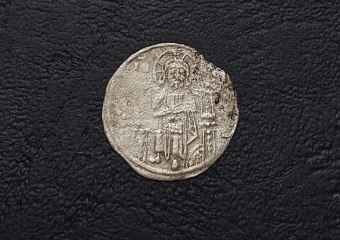28 Mar
The Archaeological season in Burgas has already started
This year Regional Museum Burgas has started the archaeological season already in mid March.
The research of the two most important archaeological sites in Burgas Municipality – Aquae Calidae Terma and Fortress Poros, began on the 17th of March.
The Archaeological studies of ancient and medieval fortress of Poros, situated on Cape Foros near Kraimorie, are headed by the Director of Regional Museum Burgas, Mr. Milen Nikolov. The first stage of the excavations this year is funded again by Foros Development AD, investor company which owns the land.
At the moment, the study focuses on the area designated for construction of water and street infrastructure.
<module="photo" id="1641" maxwidth="490" maxheight="400">
Milen Nikolov pointed out the discovered mortar mixing ditches of the fortress wall, remains of a house from the 6th century and numerous finds, among which the most interesting are the earliest Roman coins found on site - perfectly preserved silver denarius minted during the reign of Septimius Severus (193-211), copper jewelery scales and bronze ekzagia (standard for weight measurement).
[shrink]
During last year's rescue research the archaeologists located and partially revealed 280 meters of Poros’ fortress wall. It is laid out on the basis of a low hill, oriented SW - NE, starting from the SW and fishing at the port. The fortress wall itself is similar in orientation with constant width of 2.8-2.9 m. 4 square towers have been found along the wall on a distance of 54 meters from each other, two are with dimensions 10 x 10 m, and the others 6.60 x 8.40 m.
The most valuable find of 2013, a lead seal was discovered in the ruins near the beach. At the front is depicted Virgin Mary with the Infant on her breasts and on the back - crosses. The monogram is very clear and reads “ΤΟΥ ΦΟΤΗΝΟΥ” (“To Fotinos”). The lead seal is dated with a coin treasure of seven bronze coins, the latest of which is minted by Emperor Phocas (602-610). Only three more such seals are known in the world, as in Bulgaria such discovery has not been made before.
From the survey in 2013 it became clear that Foros peninsula was inhabited as early in the third century AD, probably in connection with its excellent resources for a port. It is located at the outlet of the flow of Mandra Lake, a large bay, which qualities as a harbor were recorded repeatedly until the nineteenth century. The earliest constructions found this season - the building with hypocaust wall and tower № 3 can be dated with the Roman times, 3rd century AD. At a later stage the peninsula was fortified. There is no clear historical evidence for the time of construction of the fortress wall and at this stage of research the archaeologists placed it in the period of Late Antiquity. In the 6th century the whole west and northwest coast of the peninsula were heavily covered with premises, the most western of them is related to the operation of the port.
[widget="photo" name="a156" params="albid=156&rows=1&width=500"]
The second major archaeological site of Regional Burgas Museum, which survey also began on March 17, is Aquae Calidae Therma, near the Burgas mineral baths. Head of research this season is Prof. Dimtcho Momtchilov, who continued the work of the late Tsonya Drazheva. The researchers team includes Miroslav Klasnakov (Regional Museum Burgas) - Deputy Head of research, Stephan Bakardzhiev and Yavor Russev (Regional Museum Yambol) - archaeologists and Prof. Liudmil Vagalinski (NAIM BAS) - expert.
The archaeological survey is funded with 37 000 BGN by Municipality Burgas, which wants to turn Aquae Calidae into popular tourist site in the next year.
At this stage, the goals that are set for the archaeological team are two: full survey of the area east of the east hull of the Roman baths, so that this part can be conservated and restovrated; and excavations south of the Turkish bath to continue work on the measures that are currently being carried out for conservation and restoration.
<module="photo" id="1634" maxwidth="490" maxheight="400">
Prof. Dimtcho Momtchilov said: "Even on the second day after restarting work, a part of the wall of the ancient bath was detected in the later remade bathing facilities during the twentieth century. This finding further expands the potential size of the bath and is fully in line with our thesis about how the Turkish bath was situated on the main body of the ancient and medieval bath. So in the westernmost part we already have a very strong wall, which forms the bath premises."
[widget="photo" name="a155" params="albid=155&rows=1&width=500"]


Comments
comments powered by Disqus